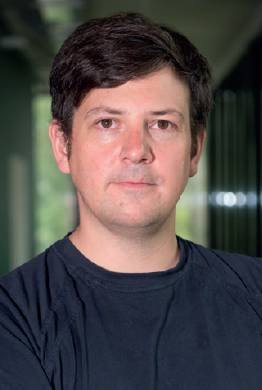Public and administrative law
The Grenfell Tower Inquiry: observations so far
The inquiry is examining the circumstances leading up to and surrounding the fire on the night of 14 June 2017. Phase 1 focused primarily on the night of the fire itself.
 About the author: Dr Edward Kirton-Darling is a solicitor (non-practising) and lecturer in law at Kent Law School.
About the author: Dr Edward Kirton-Darling is a solicitor (non-practising) and lecturer in law at Kent Law School.
Investigating the fire at Grenfell Tower
This piece will outline some of the findings of Phase 1 of the inquiry and look forward to the next stage, as well as reflect on some of the wider context around inquiries and inquests. Phase 2 of the Grenfell Tower Inquiry is due to start hearing evidence on 27 January 2020. It is expected to last about 18 months.
The Inquiry
The first phase report of the Grenfell Tower Inquiry was published on 30 October 2019, two years and four months after the devastating fire which took the lives of 72 people.¹ The numbers involved in the inquiry are huge, and it is not surprising that the full report runs to nearly 1,000 pages.
In this context, it is important that while some of the bereaved have expressed frustration at the slow progress of the inquiry, many of the bereaved stated that they supported a thorough inquiry – crucially – if it holds those responsible to account. With that condition in mind, the Inquiry did not make a very auspicious start. Indications that the Chair, Sir Martin Moore-Bick, saw the remit of the inquiry in narrow terms, focused primarily on the immediate causes of the fire, led to early calls for him to be replaced at the same time as criticism mounted at the absence of any panel members able to represent the diversity of the community affected by the fire.² In addition, the venue chosen to open the hearing, a Central London ballroom resplendent with crystal chandeliers, was convenient for the Inquiry team and lawyers, but far from the community affected by the fire, and other decisions, for example, to divide the Inquiry into distinct phases, were questioned.
As the hearings proceeded, many family members and representatives expressed further concerns; a May 2019 report by Inquest, which sets out detailed reflections on the process from family members, demonstrates many of these issues.³
Among other concerns, the families expressed disappointment at a lack of interim recommendations, as well as issues with the operation of the inquiry, including a lack of communication about the way the Inquiry would run; problems with translation for some families and with the venue itself (namely, lack of consultation on the choice of venue and issues with the layout of the room and the facilities provided). The continuing frustration with the absence of a diverse panel was restated, a ‘particular dismay’ that lawyers for the families could not ask direct questions of witnesses was expressed, and the report noted criticism of ‘a perceived lack of candour on the part of authorities and corporate entities when being questioned’ (page 7).
However, despite these concerns the community engaged with the process. The Phase 1 report was welcomed by many, including Grenfell United, which represents several of the survivors and bereaved and describes the report as ‘strong and fair’, stating that: ‘Today’s findings give us some confidence that our journey towards truth has finally begun’.4
Findings of the Phase 1 report
The report is made up of four volumes: a background volume; two volumes setting out minute-to-minute details of the spread of the fire on 14 June 2017; and a final volume of conclusions and recommendations, with a chapter remembering those who died.5 This chapter, number 32 of volume 4, ‘Remembering those who died’, draws on the opening two weeks of commemorations in May 2018, which families described as a ‘fitting and appropriate way to begin the Inquiry.6